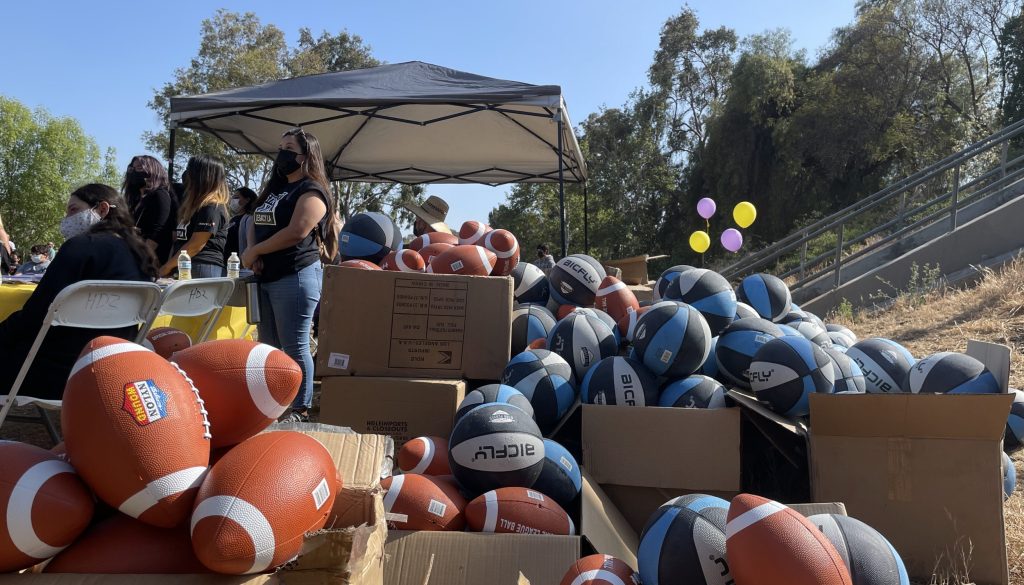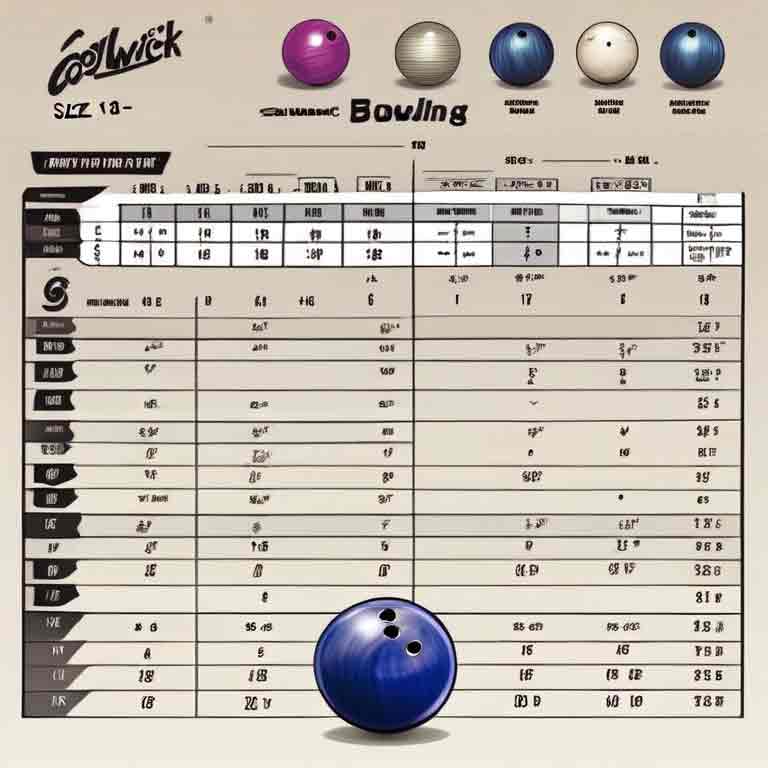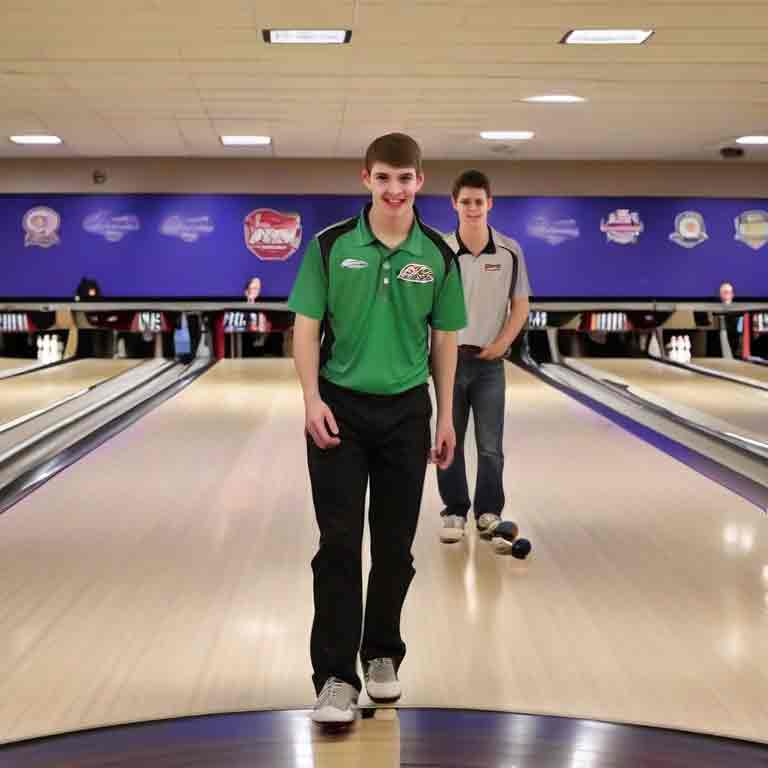Average Ball Speed by Age: Unveil Your Peak Potential In 2023!
What is the average ball speed by age? Average ball speed in golf decreases as age increases, with younger players typically achieving higher speeds. Golfers under 30 often reach ball speeds over 160 mph, while seniors may average closer to 110 mph.
Understanding the average ball speed by age can help golfers set realistic performance goals and tailor their training effectively. Speed is a vital component of a golfer’s game, influencing distance and overall scoring potential. As players age, physical changes can lead to a reduction in swing speed and thus ball velocity.
Despite this natural progression, golfers of all ages can work on technique and fitness to maximize their ball speed. Addressing equipment choice and swing mechanics while acknowledging age-related capabilities forms a strategic approach to maintaining or improving one’s performance on the course.
Factors Affecting Ball Speed
When discussing average ball speed by age, it’s crucial to consider the various factors that come into play. Ball speed is not simply a measure of one’s natural ability but rather a culmination of various physical and neurological elements. Understanding these factors can help players at all levels make targeted improvements in their game.
Body Development
Body development plays a pivotal role in determining ball speed. As children grow, their bones and ligaments stretch, and with time, they acquire the ability to generate more power in their movements. This growth pattern continues until they reach adulthood. The rate of development can differ significantly from person to person, impacting the ball speed they can achieve at different ages. For instance, a teenager’s skeletal musculature may not be fully developed, which could limit their ability to generate high ball speed.
Muscle Strength
Muscle strength is a direct influencer of ball speed. This is particularly true in sports such as baseball, golf, or tennis, where the force of a swing translates to the velocity of the ball. As players age, they build musculoskeletal robustness, enhancing their capability for faster swings. It’s important to note, muscle strength peaks at a certain age, often in the late 20s to early 30s, and appropriate training can maximize this potential for optimal ball speed.
Coordination
The synthesis of coordination and skill development is vital for increasing ball speed. Coordination refers to the ability to move different body parts smoothly and efficiently to perform complex movements, which is essential in nearly all sports. Younger athletes may have the strength, but without refined coordination, they may not achieve optimal ball speeds. As athletes age, their coordination improves through practice and repetition, leading to more precise and powerful movements that can greatly increase the speed of a ball.
Average Ball Speed By Age Groups
Understanding how ball speed varies across different age groups can provide valuable insights for athletes, coaches, and enthusiasts in various sports. Whether it’s the fast-paced serve of a tennis player or the powerful drive of a golfer, ball speed is an essential metric for gauging performance. Let’s break down the average ball speed by age group and explore how age can influence this critical aspect of athletic ability.
Children (ages 6-12)
The foundational years of development for children in this age range set the groundwork for future athletic performance. Motor skills are still evolving, resulting in typically lower ball speeds. It’s an excellent period for skill acquisition rather than focusing on power.
- Baseball pitching speeds average around 30-50 mph.
- Golf drive speeds hover near 50-60 mph.
- Soccer ball shot speeds can reach 30 mph.
Adolescents (ages 13-18)
In this bracket, we see a noticeable uptick in ball speed as growth spurts and physical training start to pay off. It’s a critical period for athletic development, with many adolescents honing their skills to increase their performance metrics.
- High school pitchers frequently reach speeds of 50-70 mph.
- Golfers in this group often achieve an average of 80-90 mph with their drives.
- Football quarterbacks may throw at speeds of 40-50 mph.
Young Adults (ages 19-30)
This age group boasts peak physical conditioning and optimal muscle development, leading to the highest ball speeds across most sports. Training focuses on fine-tuning skills and maximizing power output.
- Professional baseball pitchers commonly throw between 85-95 mph, with some exceeding the 100 mph mark.
- Elite golfers can exceed 120 mph with their drives.
- In soccer, professional strikes can easily surpass 70 mph.
Middle-aged Adults (ages 31-50)
While ball speed might see a decline as agility and muscle strength gradually decrease, experience and technique enable many in this group to maintain impressive speeds.
- Baseball pitchers’ speeds can start to taper off but often remain in the 60-85 mph range.
- Average golf drive speeds dip slightly to around 90-110 mph.
- For recreational soccer players, shot speeds typically hover around 40-60 mph.
Seniors (ages 50+)
The golden years may bring a decline in muscle elasticity and reaction times, but many senior athletes continue to enjoy their sports with adapted strategies for maintaining ball speed while focusing on precision and technique.
- In baseball, pitching speeds can average 40-60 mph.
- Golf drive speeds for seniors are typically around 70-90 mph.
- While less data is available on senior soccer players, recreational play suggests moderate shot speeds maintaining good technique.
Peak Potentials: Optimizing Ball Speed
Understanding ball speed dynamics across different age groups unlocks the potential for athletes to reach their peak performance levels. Whether you’re a youngster stepping onto the field for the first time, or you’re navigating the challenges that come with age, coalescing multiple factors to optimize ball speed is essential. Let’s dive into the actionable strategies that help athletes across all age brackets to enhance their ball speed.
Training Techniques
To amplify ball speed, a comprehensive approach to training techniques is vital. Focusing on sport-specific drills that stress muscle memory and technique refinement will lead to notable enhancements. Include:
- Plyometric exercises to boost explosive power
- High-speed drills to improve reaction time and velocity
- Technique optimization sessions to reduce drag and wasted motion
Strength And Conditioning
Targeted strength and conditioning programs form the bedrock of increased ball speed. Focus on areas like:
- Core strength for better stability and power transfer
- Lower body workouts to augment leg strength and kinetic chain activation
- Upper body exercises to enhance arm whip and follow-through speed
Skill Development
Mastering sport-specific skills heavily contributes to the capacity to propel the ball with increased speed. Key development areas include:
| Skill Area | Focus Points |
|---|---|
| Accuracy | Ensuring power transmutes into controlled direction |
| Timing | Striking at the optimal moment for maximum velocity |
| Technique | Refining gesture and posture for efficient motion |
Proper Equipment
The choice of equipment is not to be underestimated when chasing faster ball speeds. Make sure to:
- Select the right gear that complements your natural abilities
- Consider technological advancements that could give an edge in performance
- Keep equipment well-maintained for optimal results
Importance Of Consistency And Recovery
Maintaining a consistent training regime lays the groundwork for continuous improvement, while adequate recovery ensures longevity in performance. Embrace habits such as:
- Regular practice sessions, adhering to a structured schedule
- Active recovery techniques, such as stretching and foam rolling
- Respecting the body’s signals for rest and nutritional needs
Comparing Average Ball Speed Across Age Groups
Understanding the nuances of average ball speed throughout various age groups can unveil intriguing patterns and performance expectations for athletes. Whether you’re a coach trying to tailor training to a player’s age, an enthusiast eager to benchmark personal progress, or a sports scientist interested in human physical capabilities, the data on ball speed across different age brackets is enlightening.
Statistical Analysis
The foundation of understanding ball speed across age groups lies in sound statistical analysis. A careful examination of large data sets can provide us with an average ball speed for each age group. Let’s break down the numbers:
| Age Group | Average Ball Speed (mph) |
|---|---|
| Under 10 | 30-40 |
| 11-17 | 40-50 |
| 18-25 | 50-60 |
| 26-35 | 45-55 |
| 36-45 | 40-50 |
| 46+ | 35-45 |
Performance Trends
By analyzing the table above, we can observe certain performance trends with respect to age. The data typically shows a progressive increase in ball speed as players move from childhood into their late teens and early twenties, reflecting the natural increase in physical strength and skill proficiency. Post-peak speeds, a gradual decline is often evident, which can be attributed to factors such as decreased muscle mass, agility, and reaction time.
- Under 10: Developing fundamental skills.
- 11-17: Sharpening techniques and improving physical capacity.
- 18-25: Maximizing strength and speed, often considered the peak performance phase for many athletes.
- 26-35: Maintaining performance while facing the onset of physical decline.
- 36-45: Modifying training to adapt to further physical changes.
- 46+: Focusing on technique and experience to compensate for decreased physical output.
Identifying Peak Age For Ball Speed
The quest to identify the peak age for ball speed is a common objective among researchers and sports professionals. Peak performance age varies by sport and individual capability, but frequently, the data suggests a common trend. Athletes tend to achieve their highest ball speeds when they are in the age group of 18-25 years old. This correlates with peak physical fitness levels and the culmination of years of skill refinement.
It should be noted that exceptions exist due to a variety of factors including individual training regimens, injury history, and late bloomers. Nonetheless, acknowledging the typical peak age helps set realistic expectations and assists in creating age-specific training programs.
Long-term Impact And Adaptation
Understanding the average ball speed by age isn’t just about benchmarking athletic performance; it’s also about adapting to the natural progression of our abilities as we age. The data gathered over the years on this fascinating subject does more than feed our curiosity—it provides valuable insights. Let’s explore the long-term impact of aging on ball speed and the positive adaptations that can sustain an athlete’s prowess across the decades.
Sustaining Peak Potential
Sustaining peak potential is a goal for many athletes, but it’s a nuanced journey. Recognizing the peak age for ball speed, typically found in the late twenties to early thirties, is crucial. Beyond this period, maintaining performance levels becomes the focus, achieved through:
- Consistent training to combat the decline in muscle mass and reaction time
- Nutritional strategies tailored to support recovery and muscle maintenance
- Cognitive exercises to keep the mind sharp for quick decisions on the field
Adjusting Expectations
As athletes age, adjusting expectations becomes critical. Ball speed might see a gradual decline post the peak years due to several physiological changes. Acknowledge these shifts by:
- Modifying training regimens to reduce injury risk while maximizing performance
- Emphasizing skill and experience over sheer physical prowess
- Setting realistic and attainable goals that focus on personal progression
Embracing A Lifelong Journey
Embracing the athletic journey is about more than recognizing limits; it’s about pushing them in a sustainable way. This means:
Continuous learning: Staying updated with the latest in sports science and training techniques.
Adaptability: Being willing to alter one’s approach to training as the body’s needs change.
Mental resilience: Understanding the psychological aspects of aging and their influence on performance.
The journey may include different focuses over time, such as moving from maximizing pure speed to enhancing technique and leveraging experience. It’s about playing smarter, not just harder. Sample Table to represent related data, if available Note to development team: Populate this table with real data
| Age Range | Average Ball Speed (mph) |
|---|---|
| 20-30 | 90-100 |
| 31-40 | 85-95 |
| 41-50 | 80-90 |
| 51+ | 75-85 |

Credit: la84.org
Frequently Asked Questions On Average Ball Speed By Age
What Factors Affect Average Ball Speed?
Ball speed is primarily influenced by the player’s age, physical fitness, technique, and equipment. Younger athletes tend to have higher speeds due to stronger muscular power and flexibility. Technique refinement and choosing the correct equipment can also lead to speed increases.
How Does Age Impact Ball Speed Performance?
As players age, their average ball speed often decreases, mostly due to reduced muscle strength and flexibility. However, experienced players can maintain higher speeds with good technique and physical conditioning even as they age.
Can Training Improve Ball Speed In Older Players?
Yes, focused training including strength, flexibility exercises, and technique optimization can help older players enhance their ball speed. Consistent practice and a proper fitness regimen are key for maintaining and improving ball speed.
What Is The Typical Ball Speed For Teenagers?
Teenage players, especially those between 13 to 19, typically exhibit higher ball speeds due to natural muscle development and agility. The specific speeds can vary widely depending on sport, skill level, and individual physical attributes.
Conclusion
Understanding ball speed trends across different ages can significantly enhance your game. Young or seasoned, each player has unique strengths to develop and optimize. Embrace these insights, tailor your practice sessions, and watch your performance soar. Remember, age is but a number; your passion and dedication define your game.
Keep driving for that perfect pitch!

Passionate Bowler and Bowling Enthusiast
Jess Pinelli is a dedicated bowling enthusiast with a deep love for the sport that spans over 6 years. With numerous strikes, spares, and a few gutter balls under hes belt, he has honed his skills on lanes across the country. Pinelli’s journey in the world of bowling has been a remarkable one, from casual weekend games with friends to competitive league play and even a few local tournaments.
Driven by her passion for the game, Pinelli decided to channel her expertise and knowledge into the digital realm, becoming a prolific author on this bowling website. She’s your go-to source for everything bowling-related, from mastering the perfect hook to choosing the right bowling ball and even navigating the world of bowling etiquette.
When she’s not busy writing informative articles or reviewing the latest bowling gear, you’ll likely find Pinellis at her favorite local bowling alley, helping newcomers improve their game or enjoying some friendly competition with fellow bowlers. She firmly believes that bowling is not just a game but a community, and she’s committed to fostering that sense of camaraderie both online and offline.




